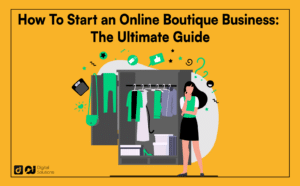This guide is all about Amazon image requirements.
Images are everything, especially in ecommerce.
In fact, according to a recent Field Agent survey of smartphone users, around 80% of them “found product images and photos to be “very” and “extremely” influential in their online purchasing decision.”
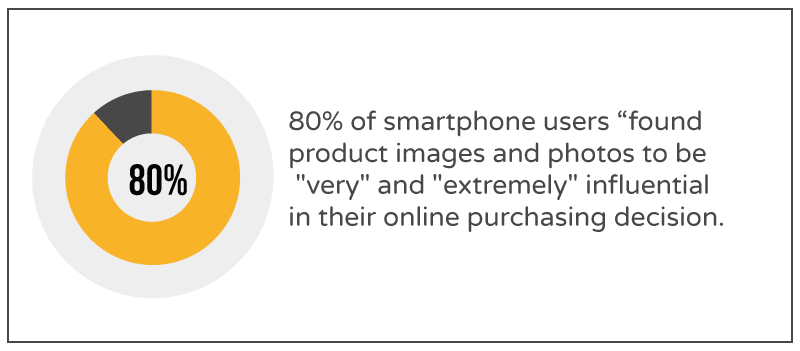
That is why getting the right type and quality of product image that follows Amazon’s image requirements while being persuasive is crucial in helping you increase your Amazon sales figures.
This article will help you with exactly that.
After reading our comprehensive guide you’ll learn all about:
- The types of photos Amazon prefers
- What to do before and during a product photoshoot
- How these pictures can drive more profit
Now without further ado, let’s get started!
Why Are Amazon Images So Important?
What do you usually do after you enter a store and see a product that grabs your attention?
Generally, you would get a sample of that product, look at it from various angles, touch it, and/or smell it.
On Amazon, customers don’t have that much freedom in sampling your product.
In fact, they are mostly limited by their sense of sight.
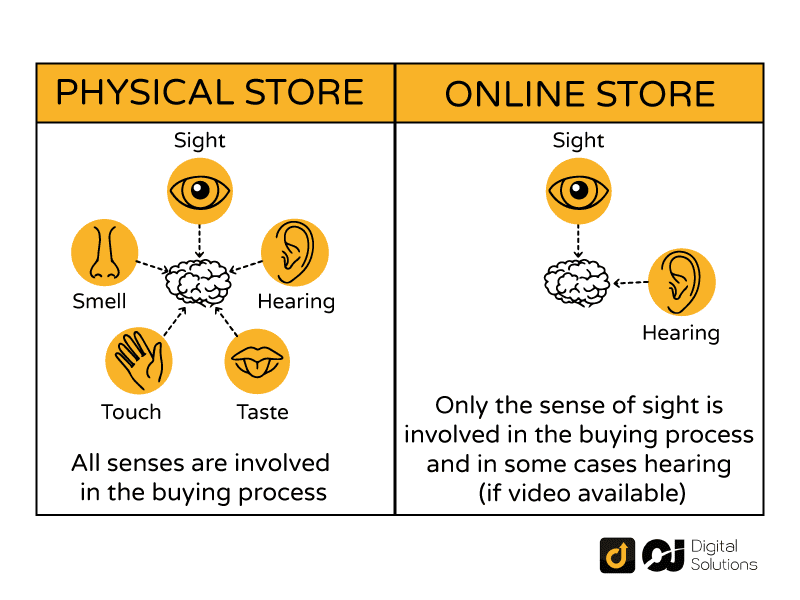
This is why Amazon product images are crucial.
Through pictures, you must touch the emotions of your customers so they’ll more likely buy your products.
In fact, German SEO tools developer Sistrix highlights the two main functions of Amazon product images.
They are:
1 – Increasing sales – According to digital marketing agency Movable Ink, online buyers tend to process visual information (i.e. photos) quicker and remember it longer than text. In other words, having quality images imprints your products on your customers’ minds, making them more likely to buy them from you.

2 – Improving page rankings – Amazon will more likely place your products near the top of its search results page if you have high quality imagery. According to recent data from Amazon itself, around 70% of customers don’t go beyond the first search results page.
Therefore, if your product makes it to the top of the Amazon SERP, then you will have a higher chance of making a sale.

Aside from attention grabbing product images, there are other ways to bump your products up the search results page. To learn more about these tips, you can read our Amazon listing optimization guide.
Now that you know why Amazon product images are important, let’s explore how you could convert this new knowledge into profits.
Let’s talk about conversion rates.
How Do Amazon Product Images Affect Conversion Rates?
To buy or not to buy?
This is the question your customers might ask themselves after clicking your product listing on the Amazon search results page.
If most customers decide to buy after clicking your product listing/s on the SERP, you will have a relatively high conversion rate.
How do Amazon product photos influence conversion rates?
Ecommerce intelligence company DataHawk mentions the following principles which enable images to positively influence Amazon conversion rates:
- Product photos increase customer trust by making your online store or brand look more professional.
- Around 75% of online shoppers depend on product images in making purchasing decisions.
- Images of your merchandise make complex information simple to understand.
There you have it.
Now that you know more about how Amazon product images affect your sales, let’s have a tour of the Amazon Gallery.
Amazon Gallery Images
There are two basic types of images you can upload in the gallery section.
They are:
1 – The main image – The picture of your product which customers can immediately see on the Amazon search results page or SERP

2 – Secondary images – The other pictures of your product that customers can view on a particular product page
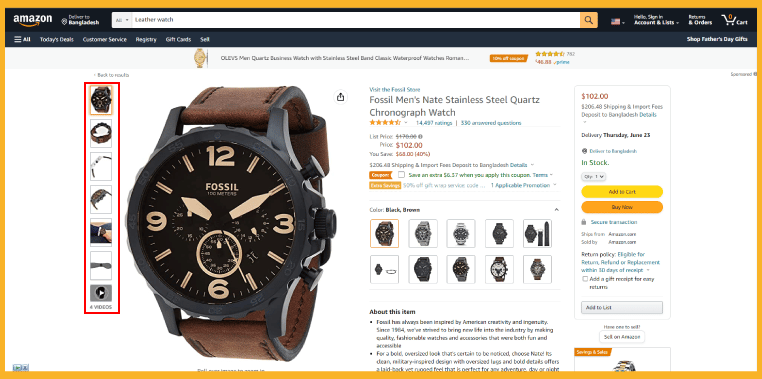
The screenshots below show, in sequence, how you can access the gallery on Amazon Seller Central.
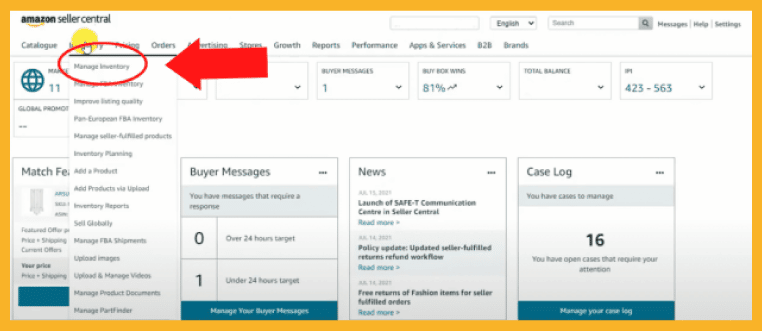
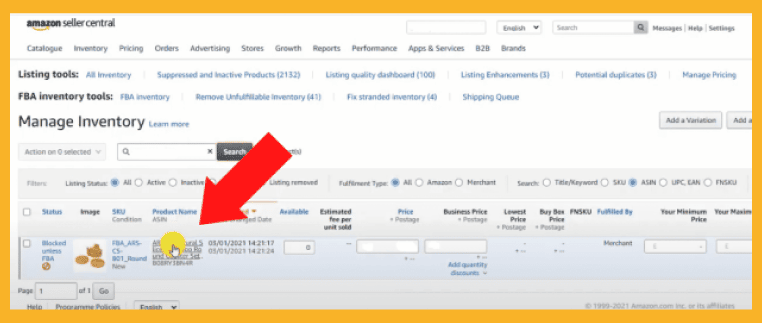
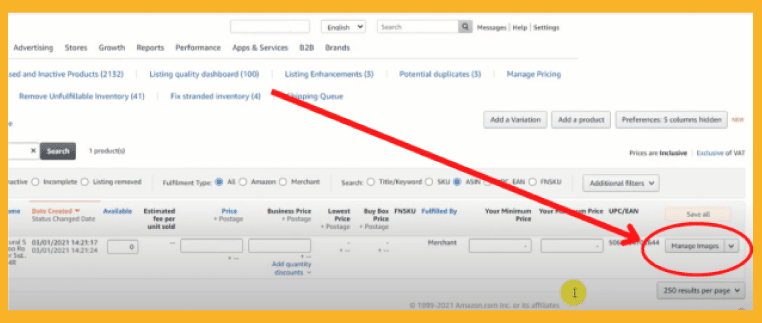

Now you had a quick look at where you can upload main and secondary images, it’s time to learn some Amazon guidelines and tricks for uploading high quality images for your product/s.
Amazon Main Image Requirements
Before we proceed to the tips and tricks to create high quality images, let’s first learn more about the basic product image guidelines Amazon has for third-party sellers like you.
The Amazon image guidelines consist mostly of the following:
- Only the cover art or a professional photograph of the product is allowed.
- Avoid using drawings or illustrations.
For example, if you’re selling a video game, you may take a picture of the box art of a game called Doom (as shown below) but you cannot make your own fan art for the said game.

Source: GameRant
- Avoid additional objects in the picture that may confuse the customer.
For example, if you’re selling a laptop, the picture below is NOT ideal.

- The photo of your product must be in focus, professionally lit and photographed or scanned, with realistic color, and smooth edges.
- The front cover art must be used as the main image for products like books, music CDs, and video CDs or DVDs.
- In general, the ideal Amazon product image size is from 85% to 90%. This means an item must cover from 85 to 90 percent of a photo frame.
- You must use a pure white background (RGB 255,255,255).
- Additional text, graphics, or inset images are prohibited.
- Pornographic and offensive materials are not allowed.
- Permitted file formats include TIFF (.tif/.tiff), JPEG (.jpeg/.jpg), GIF (.gif) and PNG (.png). Have a look at your main image file on your computer. Make sure that its file extension is .jpg, etc.
Okay, so now you know the rules. It’s time to think out of the box and find out what makes an awesome Amazon main product image.
First impressions last, whether in love or in ecommerce.
That’s why it’s vital to make your customers fall in love with your product, AT FIRST SIGHT.
Here are some tips to help “kindle the fire” of love among your customers through awesome main images:
1 – Analyze the main image of competitors in the Amazon search results page. Within the limits of aesthetics, try to stand out from the competition by shooting from different angles, etc.
2 – Ensure that your main image looks as awesome on laptops or desktops as it does on mobile devices.
3 – Ensure that your main image looks professional and immediately shows the value that your product offers, without using text and infographics.
4 – Though Amazon allows four file formats for main images, many experts recommend the JPEG format.
Amazon Secondary Image Guidelines
There is nothing secondary about secondary images.
Though found only in the product detail page (the page seen after your customers have clicked on your main product image), they are nonetheless as important as the first image.
The goal of the main image is to get clicked on
The goal of the secondary images is to get the sale
Your secondary images should flow like a sales funnel
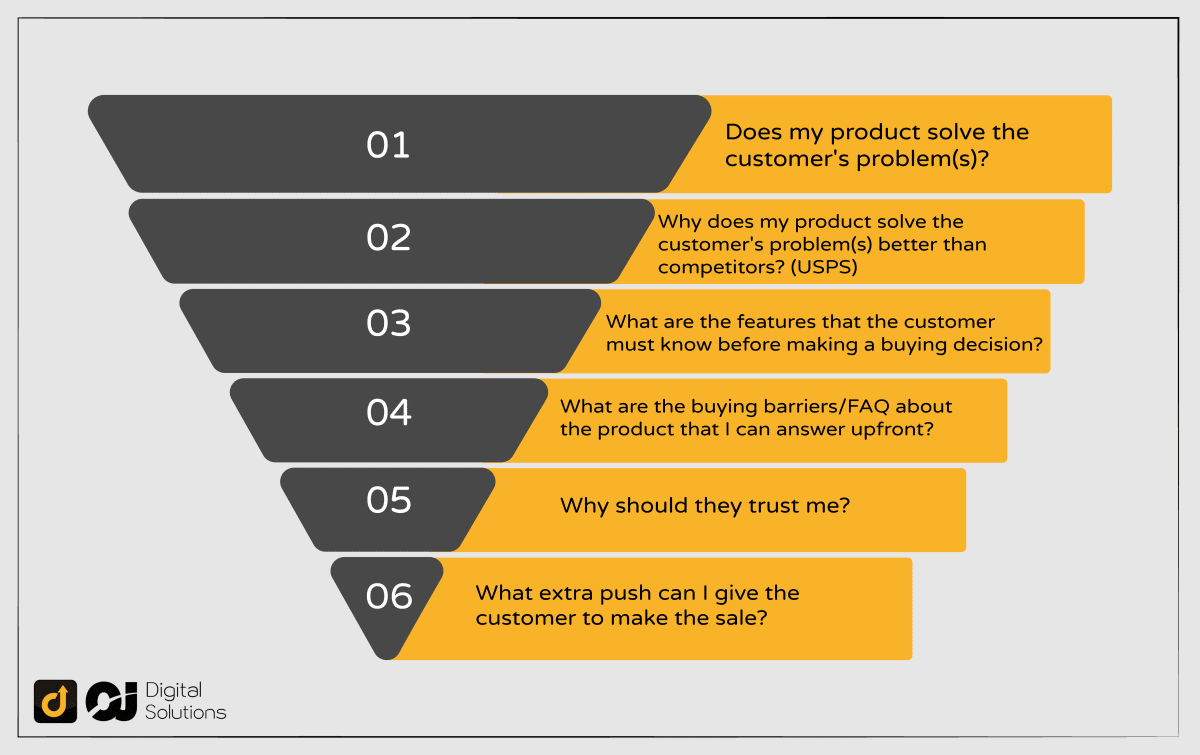
- As mentioned before, your secondary images should let potential buyers feel like they’re looking at and touching your product.
The supporting product images should enable them to probe the product you’re selling online – and hopefully convince them to buy it.
Here are Amazon guidelines for secondary images.
The Amazon product image guidelines for main images are mostly similar to the rules for secondary photos, except for the following:- You can use other products or additional objects that may help demonstrate the value of the item in question
- Backgrounds and environments that are NOT pure white are permitted.
- You can add text and demonstrative graphics in secondary images to highlight a product’s features.
- Close up images and cropped up ones are permitted for these kinds of pictures. Since you can add multiple images to your gallery of secondary photos, you have more freedom to add certain elements to your secondary pictures to make your product more sellable.Some elements and suggestions you can implement to make your secondary photos awesome include:
- Imagine how you would look at a product when you’re browsing a brick-and-mortar store and take photos of different angles of your product accordingly.
- For certain items like clothing, etc, you can use lifestyle images so you can emotionally influence your customers. Below is a sample of a lifestyle image for a baby towel.

The tips and tricks for the main and secondary images above are applicable to sellers who use the basic features of Amazon Seller Central. But Amazon also has other features in its online selling arsenal.
These, along with some image-related advice, are what we will explore in the next two sections of this guide.
Amazon Storefront Images
Aside from product listings on your Amazon Seller Central, the ecommerce platform also offers an extra feature called the Amazon Storefront.
A storefront, unlike product listings on an Amazon SERP, is dedicated to your products alone. There are no competitor products on a Storefront. The screenshot below is an example of a section of a Storefront.

Just like an ordinary product page, a Storefront also contains images. The product photos on this special part of Amazon must also be of high quality.
Whenever you’re ready, read on to learn more about best practices regarding Amazon storefront images.
An Amazon Storefront, also known as an Amazon Store, is divided into sections called tiles.
In some tiles, you can put videos to help promote your product. But for other tiles, images are enough.
The following are some examples of tiles that contain product photos:
1 – Header – Appears at the top of the Store. It contains a hero image, the brand logo, and the navigation bar. Choose your hero image in such a way that customers will have a good lasting impression (check out the sample image below).

Source: Amazon Ads
2 – Image Tile – This section can link to a page within your Amazon Storefront or your product detail page. Since images here include a link element, expect the lower 19% of your product image to be obscured.
3 – Shoppable Image Tile – If you’re selling more than one product, this part is like a shelf containing images of at least 6 products. In these images, customers can click interactive points that will enable them to buy or lead them to your product detail page.
Now that you’re more aware about images on Amazon Storefront, it’s time to discover the file size guidelines for pictures in this part of the ecommerce platform.
Amazon Storefront Image Size
The followings are some of the many different image-filled parts of Storefront and their specifications, like minimum image size (in pixels) and maximum file size (in megabytes, or MB).
1 – Header and Image Tile

2 – Shoppable Image Tile

Now that we’ve explored a little bit of Amazon Storefront and some image-related tips within that part of the Amazon website, let’s step out of that store and go back to Amazon Seller Central.
It seems that there’s more than meets the eye to your regular old product listing.
Amazon EBC Image Guidelines
We discussed earlier that your product listing or product page has the main image and some secondary images.
It turns out that if you register and get approved for the Amazon Brand Registry, you can add Enhanced Brand Content (EBC) to your product page.
EBC is also known as A+ content.
Aside from the usual product photos, A+ images can be filled with really long texts to help explain why your product is valuable to your customers.

For products with multiple uses, such as all-around cleaning agents, you can use multiple and richly-colored lifestyle images to demonstrate how your customers can benefit from such products.
Amazon product image requirements for A+ content is slightly different from regular product photos. If you’re curious about these guidelines, read on to learn more.
Amazon EBC Image Guidelines
We have summarized some important guidelines for you to check out in case you opt for Amazon’s A+ content.
The following are what we consider the most important ones:
1 – Regarding file extension, some of the allowed file types are jpg, bmp, and png. It’s slightly different from the guidelines for regular product page photos or Amazon storefront pictures.
2 – Make sure your images are not blurry, have no watermarks, or are not unreadable on mobile devices.
3 – The images on your A+ content should be different from the main and secondary photos of your product page.
For more information on these guidelines, check out this Amazon Seller Central help page article.
Now that we’ve covered a lot of ground regarding product images in the different parts of the “Amazon universe,” let us summarize the tips and tricks for Amazon product photos in general.
Amazon Product Image Best Practices
1 – When uploading image files for the different parts of Amazon (for example: product pages vs Storefront), make sure you have the right file format such as .jpg, etc.
2 – In taking the photos of your product from different angles, pretend you’re holding the item in your hand and imagine how you would look at it if you plan to buy it.
3 – If you will include other items within the same secondary photo, make sure all the said items help explain the use or value of the product.
How To Take Your Own Amazon Product Images
Though we mentioned the wisdom of hiring a professional photographer, we also offer you tips on how to take amazing shots of your products in case you feel like winging it.
But before you take your own product photos, you must prepare for and note some things before the photoshoot day.
Pre-Shoot

Before you snap away and make your products look pretty on camera, make sure you check out the following before the day of the photoshoot:
1 – Amazon listing photo requirements
2 – Your camera’s functionality
3 – Amazon’s file-naming guidelines for image files
4 – Props and equipment like white seamless paper (for background), a tripod, lighting, etc.
5 – Availability of models and location
Now that you have the essentials ready, it’s time to launch your products to Amazon stardom. It’s Photoshoot Day!
Photoshoot Day
On the fateful day where you will take quality shots of your merchandise, keep in mind the following pointers:
1 – Try to minimize shadows in your photos.
2 – Though some photo angles are better than others, take as many angles of your products as you can. It will be easier for you to choose the right angles afterwards than thinking about the proper angles during shooting.
3 – Use your tripod or another stationary surface as a camera mount to prevent blurring.
Now that we’ve covered many bases involving Amazon product photography, let’s now proceed to our Frequently Asked Questions (FAQs).
FAQ – Frequently Asked Questions
Does Amazon Accept JPEG?
Yes. JPEG is an appropriate file extension for the main image and secondary photos of product pages, as well as for Amazon Storefront and A+ or EBC content.
Why Can’t I See My Amazon Product Images on My Mobile Device?
Sometimes, product photos don’t show up on mobile devices like smartphones because the pictures don’t follow Amazon image specs or guidelines. Even if the photos are complaint, it may take around 24 hours from the time of upload for the photos to show up on your device.
Will Amazon Notify me if my Images Are not Compliant with the Platform’s Guidelines?
Amazon has its own way of alerting you regarding this issue. If one of your product listings has product images that do not align with guidelines, such as the Amazon image size requirements, that listing will be “suppressed” or removed from the platform’s SERP. This means customers can’t see your listing even if they search for it.
In cases like this, you can go to your Inventory tab and select Manage Inventory. From there, you can see your suppressed listing/s and find out if a listing was suppressed due to image issues. From there, you will know which of your listings require a new image upload.
Check out the Amazon Seller Central troubleshooting article for more information about suppressed listings.
Final Thoughts on Amazon Image Requirements
You’re now more familiar with Amazon image requirements, why they are important for helping increase your sales, and some tips and tricks to come up with killer product images across the Amazon ecommerce universe.
Now that you know these things, it’s time to grab your camera and shoot away as you make your product images more Amazon-compliant and increase your chances of profit through better sales figures.




